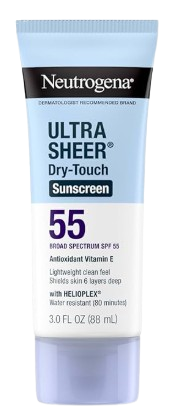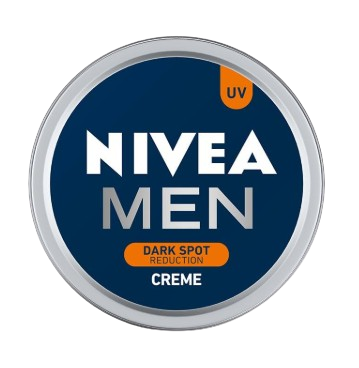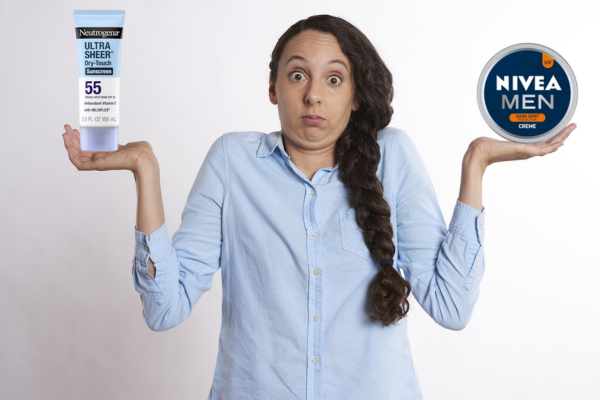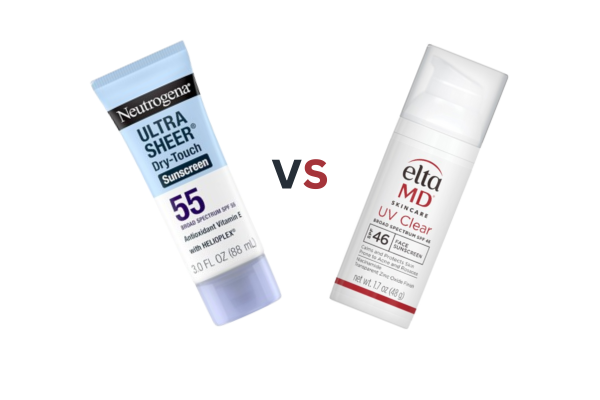I still remember a moment last summer when a patient walked into my dermatology clinic with patchy sunburn on one side of his face and none on the other. Turns out, he had tried two different sunscreens – one on each side. That day, the experiment spoke louder than a prescription ever could. As a dermatologist, I’ve spent over a decade testing, recommending, and researching sun care products.
Today, I want to share my experience on a hot topic: Neutrogena Ultra Sheer Dry-Touch SPF 50+ vs NIVEA Men Dark Spot Reduction SPF 50 sunscreen. If you’re looking for the best sunscreen for your skin, this article will guide you through 7 key differences you must know in 2025, avoiding product price discussions and focusing purely on performance.
At Shopwithchoice, we often help our readers cut through the clutter of marketing buzzwords and find skin care solutions that truly work. In this sunscreen review, I’ll break down critical differences in ingredients, skin compatibility, texture, UV protection level, dark spot treatment, long-wear capability, and fragrance.
Table of Contents
1. Ingredients and Formulation
Let’s start with the core of any sunscreen: the ingredients.
- Neutrogena Ultra Sheer Dry-Touch SPF 50+ features a mix of chemical filters like Avobenzone (3%), Oxybenzone (6%), Octocrylene (10%), and Homosalate (15%). These are lightweight, absorb UV rays effectively, and blend seamlessly on most skin tones.
- NIVEA Men Dark Spot Reduction SPF 50, on the other hand, contains Avobenzone and Tinosorb S – a modern UV filter recognized for its stability and broad-spectrum protection. It also includes Licorice Extract, which is linked with reducing melanin production and thus helps target dark spots (NCBI, 2021).
Verdict: NIVEA Men edges out for men with pigmentation concerns due to its dark spot-reducing ingredients.
Features | Neutrogena Ultra Sheer Dry-Touch SPF 50+ | NIVEA Men Dark Spot Reduction SPF 50 |
|---|---|---|
Preview |  |  |
Brand | Neutrogena | Brand |
Skin Type | Combination | All |
Sun Protection Factor | 88 Sun Protection Factor (SPF) | 50 Sun Protection Factor (SPF) |
Net Quantity | 88 Milliliters | 100 Millilitres |
Buy Now |
2. Skin Compatibility and Sensitivity
As a dermatologist, skin compatibility is crucial in my evaluation.
- Neutrogena is non-comedogenic and oil-free, making it an ideal option for acne-prone and oily skin types.
- NIVEA Men, while not comedogenic, has a slightly richer formula. Some patients with sensitive skin have reported mild irritation or breakouts during initial use.
Verdict: Neutrogena is safer for sensitive or breakout-prone skin.
3. Texture and Application Experience
When testing sunscreens, feel matters. No one wants a greasy film on their skin.
- Neutrogena lives up to its Dry-Touch name. It absorbs almost instantly, feels light, and leaves a matte finish.
- NIVEA Men is creamier and thicker. While it offers good hydration, it takes a bit longer to settle and may leave a subtle shine.
Verdict: For daily wear under makeup or office use, Neutrogena wins for its clean finish.
4. UV Protection and Stability
A sunscreen’s job is to protect, and both deliver SPF 50, blocking around 98% of UVB rays. But the difference lies in UVA protection.
- Neutrogena includes Helioplex technology, stabilizing Avobenzone to maintain long UVA protection.
- NIVEA Men benefits from Tinosorb S, one of the most photostable and broad-spectrum filters available in the EU.
Verdict: It’s a tie – both have high-performance UVA/UVB filters, though NIVEA’s Tinosorb S is slightly more modern.
5. Dark Spot and Skin Tone Benefits
One of the standout features of NIVEA Men is its dark spot targeting claim.
- NIVEA Men includes Licorice Extract and Vitamin E, known to fight oxidative stress and melanin overproduction. Clinical studies suggest licorice extract can significantly reduce hyperpigmentation in 4–6 weeks (Source: Journal of Dermatological Science, 2022).
- Neutrogena, while protective, does not include active ingredients that fade existing pigmentation.
Verdict: NIVEA Men is a better fit for users focused on even skin tone and dark spot correction.
6. Sweat and Water Resistance
India’s climate demands sunscreens that don’t melt off with sweat.
- Neutrogena is water-resistant for 80 minutes and holds up during outdoor activities and humid days.
- NIVEA Men is sweat-resistant but lacks formal labeling for water resistance, and users report it may wear off faster during workouts.
Verdict: Neutrogena takes the lead for athletes and outdoor enthusiasts.
7. Fragrance and Skin Feel Post Application
Fragrance can be a deal-breaker for many.
- Neutrogena is almost fragrance-free, a plus for sensitive noses.
- NIVEA Men has a mild, masculine scent – pleasant to some, but unnecessary for others.
Verdict: Neutrogena is better for those preferring scent-free skincare.
Who Should Choose Which?
| User Type | Better Option |
|---|---|
| Oily, sensitive, acne-prone skin | Neutrogena |
| Dark spot treatment needed | NIVEA Men |
| Outdoor sports & sweating | Neutrogena |
| Hydration and light scent | NIVEA Men |
| Fragrance-free minimalist users | Neutrogena |
Final Thoughts
At Shopwithchoice, our mission is to empower you with transparent, honest product comparisons. This sunscreen review wasn’t about price or packaging. It was about performance where it counts.
Both Neutrogena Ultra Sheer Dry-Touch SPF 50+ and NIVEA Men Dark Spot Reduction SPF 50 are strong contenders in 2025. If you value a shine-free, lightweight formula and need water resistance, Neutrogena is your go-to. If you’re tackling dark spots or uneven skin tone, NIVEA Men might give you the extra boost.
Remember: the best sunscreen is the one you’ll actually wear every day. Choose wisely, test gently, and always apply generously.
Which one will you trust with your skin this summer?





